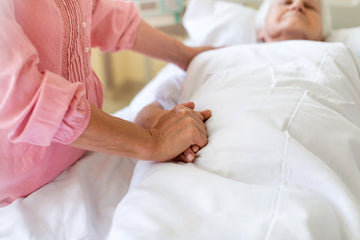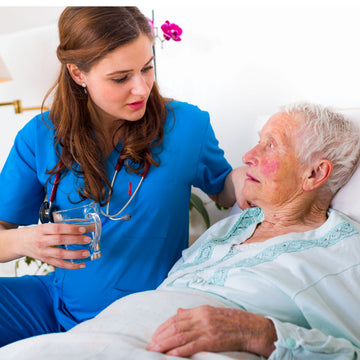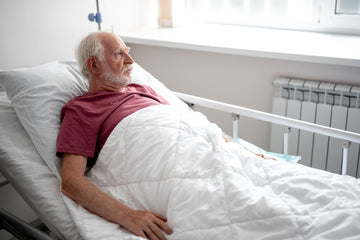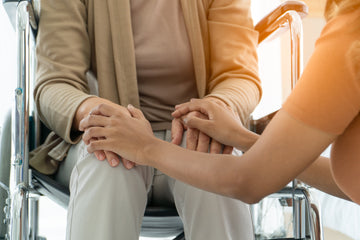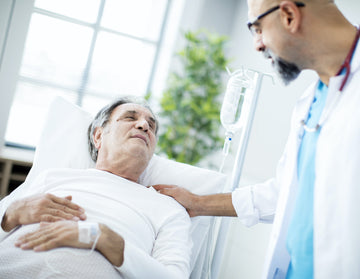
In patients with limited mobility, paralysis, serious sickness, or advanced age, sustained pressure on specific body areas can develop into bedsores or pressure sores or pressure ulcers (Decubitus Ulcers). Even though pressure sores appear to be ordinary wounds, if they are not treated, they could have serious and long-lasting consequences. Since most people who have pressure sores also have other health problems, the development of ulcers just makes them more uncomfortable. There are many bedsore prevention products available, such as silicone based bedsores gel, pressure sore ointments, air mattress, water beds etc., that can help lessen the discomfort.
What are some of the parts that are frequently impacted?
The persistent pressure on specific body parts and the hard surface of their bed or wheelchair lead to stress. Bony areas like the heels, buttocks, head, heels, tailbone, and knees (side or under knees) may become sore as a result. If it progresses to stage 3 or 4, there is risk of serious infection or complications including death. The tailbone is the most frequently afflicted location since it is most stressed in the sitting and sleeping positions. Among the additional areas are:
Heels
Pain in the heels is a possibility for patients who are restricted to a bed or wheelchair. They experience severe pressure on their skin on heels since it's in constant contact with bed and rubs against the bedsheet that leads to friction and causing bedsores.
On back of head or ears
Sores on the head often go unnoticed as they hide behind the patient's hair. It is a result of immobility often seen in paralyzed or coma patients. It is necessary to change the patient's position to avoid constriction of blood flow to the head and ear. A well-ventilated and dry space is a must! Regular check-ups can help in early detection and treatment.
Shoulders
A pressure ulcer or decubitus ulcer commonly forms on the shoulders of people with little to no movement. Objects with a hard surface including hard mattresses and linens on the bed and increase pressure and friction on the skin.
Buttocks
Waist-down paralyzed patients or ones with restricted mobility can develop a sore on their hip bone, buttocks and tailbone. Paralyzed patients might develop a sore as they lose sensation down their waist. Patients who use a wheelchair or are confined to a bed might be unable to change positions frequently to shift pressure to other body parts.

Can bedsores be prevented?
Proper preventive care and maintaining hygiene can help prevent it. While bedsore starts as a normal wound, if left untreated it can lead to serious issues. People with diabetes and blood circulation irregularities run a higher risk. Once a sore develops it can take days, months or even years to heal. Prevention is important as it can infect other body parts as well and cause mental confusion, fever and chills.
Bedsore Treatment
Depending on the severity of the wound a supportive preventive and treatment plan can be devised. Some of the ways are:
Silicone-based gel for bedsore
Barrier creams and gels can act as protective shields to combat friction and moisture. Amaterasu Lifesciences provides specialized bedsore prevention products. With their innovative Soreze gel, is the nation's first silicone-based bedsore prevention product. It creates a shield of defense on the skin, which lessens friction and leaves the skin feeling smooth. Go to the link to learn more about them!
Bedding/seating hygiene:
Soft foam-based bedding, linen or mattress can help alleviate the pain. One can also opt for water/air beds. It is important to change sheets regularly and check for damp or soiled bed sheets. In the case of a person in a wheelchair, check for the quality of seat cushions and armrests.
Maintaining hygiene around the wound
Body fluid deposition can at times lead to infection. Hence the wound must be kept clean, moist and covered with an appropriate bandage to avoid further spread. It must be cleaned with a saline solution to remove all bacteria and dead skin cells.
Diet and Anti-biotics
With help of a nutritious and balanced diet along with antibiotics prescribed by a physician, pain can be lowered.
Relieving of stress
Along with all the treatments, it is important to ensure that we shift the patient within regular intervals of time to reduce pressure on the area of the wound.
While bedsores can get painful and risky, proper care and treatment can lower the pain and stop its spread. Timely detection and proper ointment for pressure sores can help prevent or treat it. Amaterasu Lifesciences is a leading solution provider of gels for bedsores management. Their advanced formula forms a breathable and water-repellent protective layer on the skin helping improve the healing process in case or early stage 1 bedsores. In case of stage 2 to stage 4 bedsores it's advisable to apply Soreze gel around the bedsore areas and other bedsore-prone areas for best prevention of bedsores.
